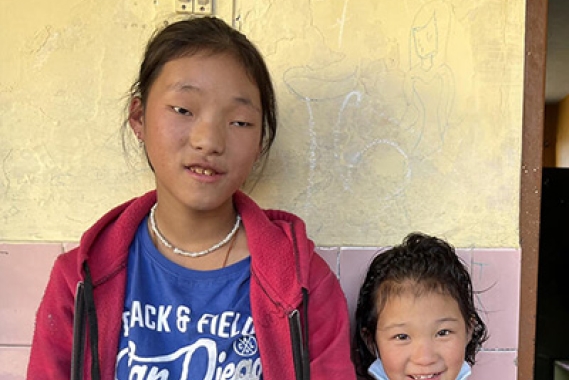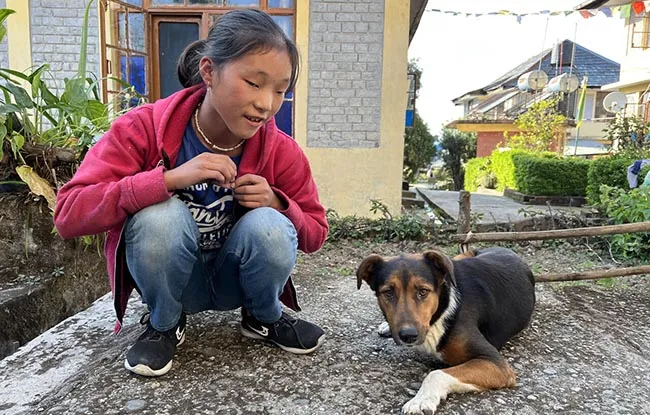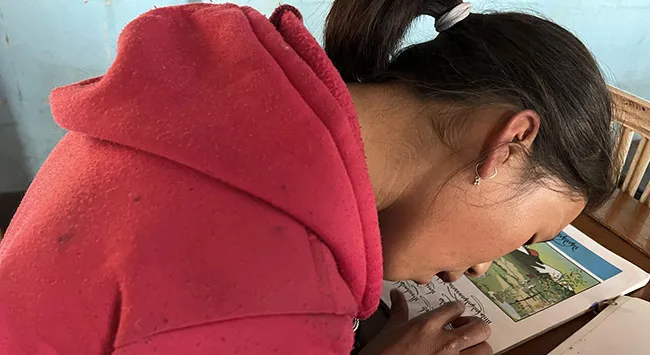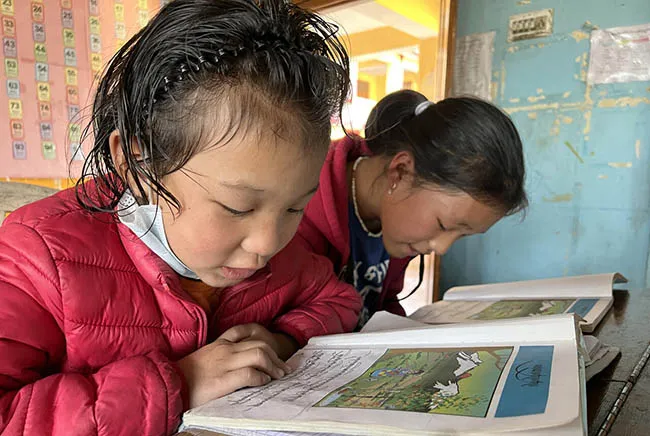Two girls guide each other in a Tibetan Children’s Village: "Lives that shine with a little push"
Pema and Leki are close friends in a Tibetan Children’s Village in Suja, India, a unique village for Tibetan refugees that is part of the SOS Children’s Villages federation. Their friendship enables them to grow, play and benefit from the support that SOS has to offer.
Pema is a 12-year-old girl with a dream and a raspy lilting voice. Born partially blind, Pema says her dream is to a live an independent life and spend her free time reading her braille books.
This is Pema’s first winter in the Tibetan Children’s Village in Suja, India, a unique village for Tibetan refugees that is part of the SOS Children’s Villages federation. The village was originally built in 1963 to care for Tibetan children who had come to India without their parents. Over the years, the village has evolved to care for Buddhist children who, for various reasons, have lost adequate parental care.
Pema was brought to the village in April 2021 by an uncle. Her blindness had become an issue for her poor family that found it increasingly difficult to accommodate her, as she could not work in the fields.
In the picturesque mountain village where Pema lives now, you find her taking slow walks around the campus full of stairs that are difficult for her to navigate. She is also trying to make friends with the pet dogs in the village who scared her when she came first.


Now with her friend Leki, Pema is slowly learning to relish different parts of the village that were inaccessible to her earlier. The girls can often be seen having a fun time together. They are inseparable in school and Leki has become Pema’s shadow. She walks her to school, sometimes packs her bag and often helps her with school lessons.
“They are chatterboxes when they are together,” says their SOS mother who often has to shush the girls when they are chatting late night.
Pema and Leki were brought to the Tibetan Children’s Village some time apart, but the girls were neighbors and best friends even in their native village of Barchipam, Arunachal Pradesh in India. It is a geographically remote region, which has large number of Tibetan Buddhists settlements. The area also has a large frequency of congenital visual impairment seen in children due to vitamin A deficiency.

Pema’s parents are marginal farmers and she had two younger siblings for whom she had to play the caretaker despite her blindness. She recalls how she was often asked to miss school and look after her siblings all the time. “The children would keep crying and keep me so busy I did not even have time to breathe. They would keep asking for mother but mother had to work in the fields. Most days I could catch my breath only after mother came home. Now I can study and play with friends as much as I want,” she says with a toothy smile.
Leki also had a similar story growing up. She was born to a father who was a Buddhist householder monk and her mother was a tailor. The father lived on subsistence of the villagers and the small income her mother earned was not enough for the family of five. Leki being the eldest daughter had to play the caretaker for her baby siblings who were perennially hungry.
“The only time we got food was when there was a prayer ceremony and people donated food to my father. He would get the food home and then we would eat a full meal.” Leki and Pema’s school was much further away from where they lived and it used to be a trek to reach there during the rainy season. The government school in their remote village was also understaffed and they would often have to share classes with students of a different seniority.
The Tibetan Children’s Village cares for some 600 children. Besides their regular education, the children in the village learn about their Tibetan culture, religion and identity. “The Tibetan refugee children have a tough time finding proper resources in India,” says Village Director Namdol Tashi. “Many Tibetans do not have citizenship so they have no access to educational, health facilities. Even the ones who have citizenship lack the community, identity and belonging.”

The Tibetan Children’s Village gives many such children loving homes, education and a good support system to establish themselves in society. “Many former care-leavers donate to keep us going, visit us often and keep in touch with their SOS families,” says Mr. Tashi. “For us, it is a sign that we are making a small difference to lives that can shine with a little push.”
